While the Oculus Mobile SDK might eventually spread to other smartphones and accompanying virtual reality hardware, for now it remains relegated to Samsung’s Gear VR. In turn, the Gear VR is designed (both in terms of physical construction and software) to work with only one smartphone from Samsung’s stable of many: the Galaxy Note 4. Obviously, that leaves a large majority of the Android-toting population squarely stuck in their non-virtual realities. What if there was a way to get the Samsung Gear VR to work with other devices?
Inspired by a post by Pure Engineering on Android Forums, we decided to investigate. It turns out using an unsupported phone is not completely out of the realm of possibilities, but it comes with a few major caveats. The Oculus Mobile SDK is currently only optimized for the Galaxy Note 4, its processing suite, and embedded sensors. Using another device will not provide the true Gear VR experience, providing limited control and not taking advantage of the headsets more unique features and software-specific enhancements.
Fitting the phone
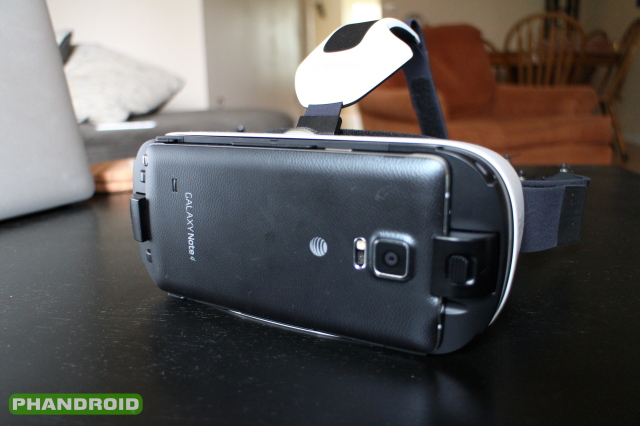
First and foremost, the Gear VR is built to connect via Micro USB to the Note 4 and hold it snugly in place with a clamping mechanism. In order to fit another device into the Gear VR, the phone must be generally the same size as Samsung’s phablet, which features a 5.7-inch display.
Any phone should also have a Micro USB connector centered on the bottom of the device. The USB port will strictly be a matter of fit, as the connection will serve no function due to the lack of software link between a device other than the Note 4 and the Gear VR. One benefit of connecting to the USB port is it will help hold a smaller smartphone in place. It is possible to finagle a device without the proper USB port placement into position (especially if it is smaller), but there may be the potential for damage to both your device and the Gear VR headset.
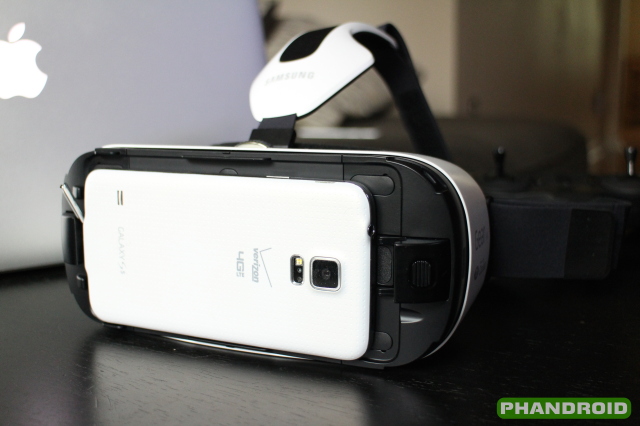
Some devices that we tested and more-or-less fit include:
- Samsung Galaxy S5
- Samsung Galaxy S4
- Nexus 5
- Motorola Droid Turbo
In general, if the phone is smaller than the Note 4 it should fit, so you might add devices like the HTC One M8, LG G3, and Moto X to the above list. Most of these devices being too small for the clasping mechanism to function properly, you might utilize a case or get some felt or other soft material for added padding. The Nexus 6 is a bit too large to fit properly, but the OnePlus One slots in without any additional padding.

Once you fit your device, the Gear VR will be used more or less in the same fashion as Google Cardboard or a similar low-cost virtual reality substitute, utilizing the Gear VR’s stereoscopic lenses only.
Installing the right software
Since your unsupported phone will not take advantage of the Gear VR’s special Oculus software, you will need to install the proper applications to create 3D and VR content.
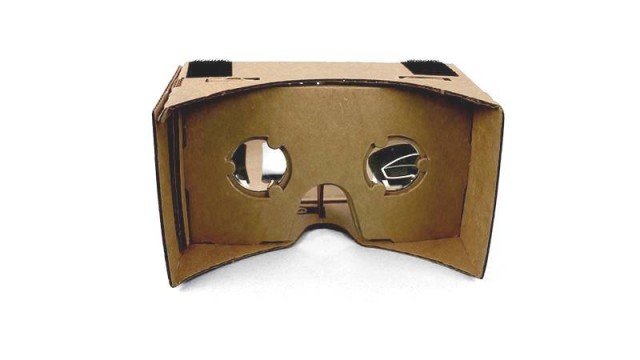
Google Cardboard is perhaps the most full featured of these options, providing stereoscopic viewing experiences to create three-dimensional environments that can be explored with the movement of your head. Google Cardboard includes a number of neat demos as well as the ability to view YouTube in a virtual theater and also import your own content.
Another option would be to use a stereoscopic video viewer like VR Player. VR Player does not include all the bells and whistles that we find in Google Cardboard, but it does offer 2D and 3D video playback tailored to viewing with a set of VR goggles like the Gear VR.
What works, what doesn’t
In the case of using a device other than the Galaxy Note 4, the Gear VR is being utilized for its mounting hardware and lenses alone. As long as your device has a screen similar in size to the Note 4’s 5.7-inch display, you will get pretty accurate 2D and 3D viewing of video, games, and photos. Since the lenses are designed to work most accurately with the Note 4’s display, smaller (and larger, if they will fit) devices may provide a less than perfect experience. The Gear VR’s manual focus wheel can also be used to physically move the display nearer or farther from the eyes to adjust clarity.
The head tracking and VR experience will largely be dependent on the software used. The Oculus technology and software utilized by the Note 4 and Gear VR will not be available, so touchscreen controls (or a Bluetooth controller) are required to navigate menus and perform other actions. The Gear VR’s touchpad, volume controls, and other buttons will not function. You will not have access to the Oculus Store and VR content available exclusively to the Galaxy Note 4 when paired with the Gear VR.
A neat trick, but should you buy the Gear VR for your unsupported smartphone?
It has been demonstrated that the Gear VR can indeed “work” with an Android smartphone other than the Galaxy Note 4, but after evaluating the result we can’t whole heartedly say it’s a very worthwhile experience. Unless you plan on upgrading to the Note 4 in the near future, at $200 the Gear VR is simply too expensive when compared to cheaper Google Cardboard holders that will produce an identical experience.
The real value is in the Oculus software included with the Note 4. It is one of the more refreshing, exciting, and immersive experiences to grace the Android ecosystem in quite some time. Again, that won’t be available on unsupported smartphones, but if you own a Note 4, by all means think about picking up the Gear VR (we’ll have a full review soon).
If you want to see what other early adopters are up to as they explore the ins and outs of the Gear VR Innovator Edition, be sure to head over to our Gear VR forum for all the latest, tips, tricks, hints, and revelations.
UPDATE: Here is Samsung’s official comment on using the Gear VR with other smartphones, from Nick DiCarlo, VP GM of Immersive Products and Virtual Reality:
“The Gear VR Innovator’s Edition was designed to provide very smooth motion tracking and a high quality ‘presence’ experience for VR enthusiasts. This can typically be measured by ‘motion to photo’ time and the threshold Gear VR has met is 20milliseconds. This quality threshold has the potential to make VR more comfortable for a wider population of users and help grow the use of VR. Creative approaches to creating a VR headset, such as fixing a phone into the Gear VR to benefit from the comfortable straps and lenses can improve the experience, but that approach doesn’t take advantage of the tracking hardware and other hardware and software optimizations that have been done on the Galaxy Note with the software that was developed with Oculus. As VR enthusiasts, we all know that, but we wanted to clear things up for the rapidly growing group of friends who are more new to VR. We are honored to be part of the VR community and look forward to advancing the potential of VR together.”



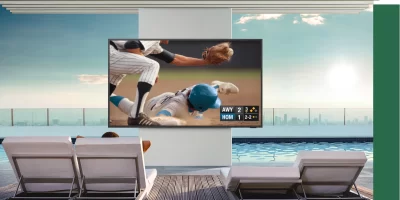
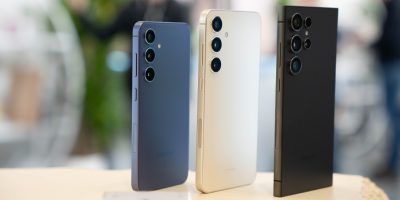


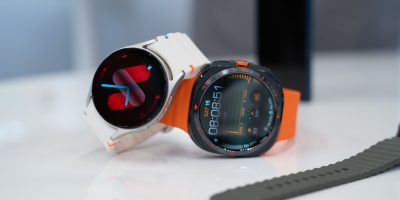
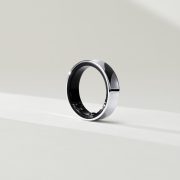


I will happily stick to my alternating existence in actual and enhanced reality…
My own reality is rough enough… I will save my money for this reality.
It’s not just the Oculus Software, there are also sensors in the Gear VR which are better calibrated and they update faster with 1kHz than those in smartphones. These Gear VR sensors are only activated when the Note 4 is detected.
And Samsung allowed Oculus low-lewel access to the CPU which bypasses the Android system but can also mess up a phone if this access could be freely used by others.
Correct answer Oculus has been worried about this possiblity for some time. It’s not because they want all the money ether they open source the tech. They believe inferior experiences will harm the adoption of the technology. They want hardware designers to optimize their tech. To properly handle VR content. Note 4 with John Carmack help has been optimized specifically to function in this regard.
Exactly. 100% what you just said. And it’s true, bad experiences combined with the word going around, can seriously harm VR. VR is in a delicate stage right now. Hence why Oculus are dragging their heels with releasing the consumer version, and why Samsung isn’t hitting the big PR horn with the Gear VR.
Hopefully i’ll get my Gear VR in the middle of january (i live in Sweden, it’s not officially released here yet). Can’t wait :P
Spent time with the Oculus DK1 before, and even that impressed me alot (and made me almost puke eventually). I’m 100% positive that the Gear VR will bring an overall better experience.
“We’ve reached out to Samsung for comment about the Gear VR’s potential with other Android devices…. We’ll update this article when we hear back.”
Don’t hold your breath. Knowing Samsung they probably won’t add support to this release for the other Galaxy devices because they want you buying their most expensive device. They’ll shoot you the message that the Note is ‘optimized, and it’s the only device that can handle the intricacies…’ etc etc.
Well it is directly designed for this phone.
Ok… Samsung has spent TONS of money into making a headset for THEIR phone.. What’s your problem? I say it’s a damn fine start. The Oculus Rift for consumers will be for everyone with a computer, and it’ll be great.
Also, The Oculus DK2 use a Note 3 screen. Business wise i say that Samsung has made some damn smart moves, partnering with Oculus. Sony are making Morpheus, for THEIR console (PS4), and the OR is for computers.
MS’s up to something as well.
Eventually VR will be more accessible
Edit: And they did respond. Without dickriding anything, i say it’s a perfectly fine response.
Where the hell did I say I had a problem with it? I’m just pointing out the obvious that it’ll be in house only.
I don’t see any HTCs working with this since they flip the USB port 180 degrees compared to everyone else. Also seeing as how the Note 3s USB 2.0 port is off centered because of the whole USB 3.0 port its not going to work either
Note Edge!?
I am a large guy, will the lenses for the eyes adjust in & out to properly fit my “dome” & eye placement?
Also, there is no mention, whatsoever about the thickness of the phone… if I have an otterbox defender, will the clasps fit around it?